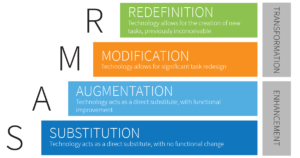Personal Experience
When it was time for me to begin this project, I wasn’t quite sure which EdTech Application to evaluate. Fortunately, as I was scrolling through lists of various educational applications, I came across one of my favourite programs GoNoodle. I have used this application frequently while teaching various programs but I never quite connected it to multimedia. But now, knowing what I know about multimedia from our previous topics, I can see how it would classified as social media.
GoNoodle provides videos which include demonstrations, pictures, narration, and text to engage students of many ages in physical activity and promote the importance of mental and emotional well-being. I use this program often in my dance classes or summer camps with young students when they are need of a change in pace or need some structured relaxation. I am looking forward to learning more and I hope to explore this program more through this assignment.
How it works
GoNoodle is an educational program that provides short interactive videos for various types of classrooms and is geared towards students in Kindergarten and Grades 1 through 5. Physical Activity and personal wellness are promoted through engaging videos provided by multiple channels. Videos are organized based by channel (who the videos were created by) or by categories such as academic subject, areas of mindfulness, various physical skills, or types of movement. These videos can be used by teachers throughout the day for any reason including action breaks, breathing break, or regrouping. I find this to be a great source of engaging physical activity especially when time or space is limited within the classroom and there is a need to get students moving.
Accessibility/ Design
This education application is free for all educators and is available to parents and students in their own home which makes it very accessible for everyone. However, some technical elements are required to engage in this program such as a computer, a large screen to view, or internet. This may make it less accessible to those who do not have access to these items.
This program was largely designed to promote healthy activity and mindfulness in young children. The goal of each video provided is to focus attention, benefit the brain and exercise the body. The program is also design for long term engagement. To provide motivation for completing more active videos, the classes are able to choose a virtual character and levels up as points are earned and videos are watched. It is also possible for Educators to set up more than one class under their account so each class can measure their own progress.
Privacy
In regards to the privacy of this application this app appears safe to use. Educators are asked to create an account with minimal personal information being collected. The program asks for a name, email, a school name, and name to ensure that you are of age to register. Students are not able to create accounts or access the services themselves and there is no collection of students’ personal data (GoNoodle, 2020).
Watch this video to find out more.
Connection to Multimedia Learning Principles
I think that this program has the potential to fit every multimedia principle. As every video is created differently, depending on which video is selected, the multimedia principles within the media may be different. Saying this, most videos (but not all) follow the modality principle in which narration is used with video and picture rather than text as well as the spatial and temporal contiguity principles as images and words are presented simultaneously and close to each other (Mayer, 2014).
Evaluation

Image Modified from Original by Lefflerd’s on Wikimedia Commons. Retrieved from:https://www.schoology.com/blog/samr-model-practical-guide-edtech-integration
Based on my reading regarding the SAMR model for evaluating and integrating EdTech, I believe GoNoodle falls under the category of Augmentation. In this model, augmentation means that a technological tool acts as a substitute for a traditional style of learning but their is improvement in students learning and productivity (L., 2017). GoNoodle fits this description as the active videos may substitute traditional command style learning or physical education but they allow students to work on and improve their mental and physical wellness.
References:
GoNoodle. (2015, September 1). GoNoodle 101. Youtube. Retrieved from:https://www.youtube.com/watch?v=pgY9nzm1hpk
GoNoodle. (2020, June 12). About GoNoodle. GoNoodle. Retrieved from: https://support.gonoodle.com/article/241-what-is-gonoodle
Mayer, R. E. (2014). The Cambridge Handbook of Multimedia Learning. The Cambridge Handbook of Multimedia Learning. doi:10.1017/cbo9781139547369

rmccue
Good job.